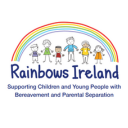How Children Understand Death: Age-Appropriate Support for Grieving
It’s important to remember that while children’s understanding and reaction to death varies according to their age, even very young children are affected by the absence or “disappearance” of a primary caregiver.
Understanding that death is permanent is not something young children—possibly up to the age of five or six—can grasp. They often see death as temporary and assume the person will return. In a gentle and caring way, it’s essential to communicate that when someone dies, they do not come back. This message may need to be repeated many times over the months following a death.
Use Clear, Factual Language
Children are very literal in their understanding of language. For example:
- If a child is told the dead person has “gone away,” they may assume they will come back.
- If told the person is “asleep,” they may expect them to wake up.
It is critically important to use factual language such as coffin, dead, funeral, and graveyard when talking to children about death. No matter how clear we are, we cannot give young children a full understanding of a process that requires developmental growth. However, honesty, factual language, and emotional support will help them begin to process the death as they develop cognitively.
Supporting Children Aged Seven and Older
From about the age of seven or eight, children begin to slowly understand the concept of the permanency of death. To help children in this age group cope and build understanding, the following areas should be addressed:
1. Information
Children often know very little about death or the rituals surrounding it, which can add to their sense of panic and fear. Provide clear explanations about what will happen at a wake, funeral, and burial. Tailor the explanation to the child’s age and offer a promise to update them with further information—this promise must be kept.
2. Inclusion
Once a child has received a clear explanation, they should be given a choice about how much they wish to be involved. Attending a wake or funeral is not detrimental to a child’s well-being, provided they are properly supported.
3. Routine
Children thrive on routine. While it may be difficult to maintain during the time of a death and funeral, routine helps children—especially very young ones—feel secure and cope with the disruption.
4. Emotional Support
If the child’s primary caregiver has died or is deeply affected by the death, someone the child likes and trusts should take on the role of answering questions and providing reassurance.
Every Child Grieves Differently
Every child develops an understanding of death at a different pace. A full understanding does not happen in childhood, but the emotion of loss is certain. With honesty, support, and age-appropriate communication, children can begin to process grief in a healthy way.
Memorial Gift Shop
View AllMounted Prints
Mounted original design prints, inspired by the early Irish Celtic illuminated manuscript, The Book of Kells.
Pressed Flowers with Verse / Photo
Hand-pressed wild Irish flower wall-hanging with verse/photo. Suitable for framing.
Condolence Books - Printed and Bound
Creating a printed hardbound book of online messages of condolence can be a meaningful way to preserve and honour the memories of a loved one.


